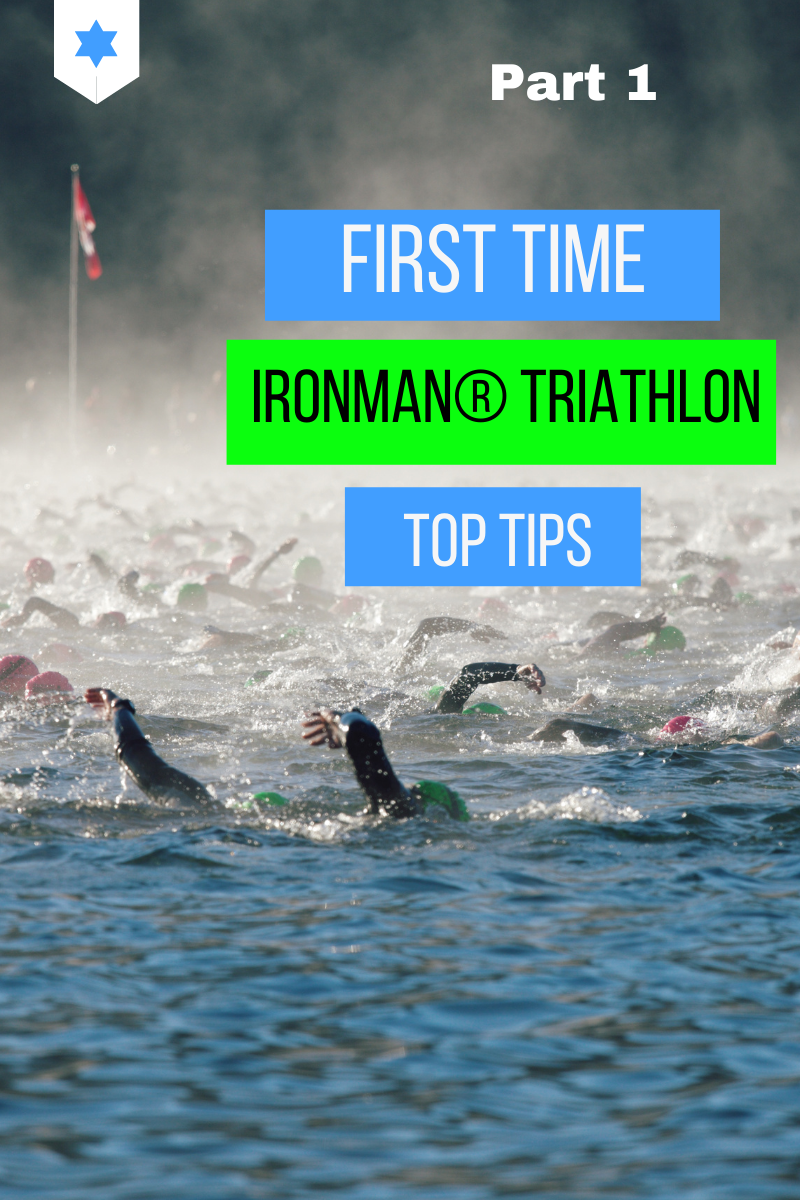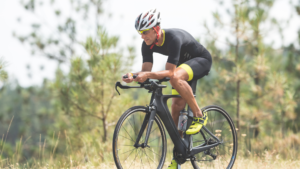
First Time IRONMAN® Triathlon Top Tips Part 1
- Post author:William Ritter
- Post published:November 30, 2021
- Post category:FTR Blog / Ironman and 70.3 / Swimming / Training
BY WILLIAM RITTER
First Time IRONMAN® Triathlon Top Tips Part 1
You have signed up to your first IRONMAN®, found a great coach and have loads of questions but who to ask? You may think some of your questions are a bit embarrassing but as Albert Einstein said, “Learn from yesterday, live for today, hope for tomorrow but the important thing is not to stop questioning”. Here are answers to questions you may have, and I have answered before but if you don’t see the answer to your question then reach out to me and I will be happy to answer them. This is part 1 of a three-part blog and in my first one I will cover some training and swimming tips.
IRONMAN® Triathlon Training
Do I need a power meter or a heart rate monitor?
Athletes do find technology useful in training for a long-distance triathlon such as a power meter for cycling and a heart rate monitor for running but there are no hard and fast rules. Some athletes train by “feel” or RPE (Rate of Perceived Exertion) on a scale of one to ten. Power meters can be expensive so if you are first starting out maybe then this could be something for the future. Heart Rate monitors are less costly and may be a good investment and will give you some useful stats to help with your training and understanding your training progression. But at the end of the day, it’s what you feel will work for you and you can always buy more tools as you go further down your training journey.
I always feel like I’m slacking on rest days. How important are they?
Rest days are absolutely vital to a good training plan. Your body needs time to recover after you push it hard in training. If you don’t allow your body to recover, you’ll accumulate fatigue, your performance will drop, and you may even end up injured. Make sure you take days off.
What is a Brick session?
A brick session is a training set that involves more than one discipline/sport back-to-back. The most common example in triathlon is the bike to run brick, where a bike session will be followed by a run. You can also have a swim to bike brick and also a combo brick and swim, bike and run brick during training. Both of these types of bricks are beneficial to condition and prepare you for the IRONMAN®.
When I’m running in zone one, it feels really slow. Is that right?
Yes. Base training is all about keeping your heart rate down and building fitness, not about speed. So, you may well find that you’re running slower than usual but that means you’re doing it correctly! You may need to walk in the beginning to keep your heart rate down, this is normal. The truth is many athletes spend too much time training in the medium grey zone whether they realize it or not. These athletes do not go easy enough on easy recovery days and therefore are not able to push hard enough on the zone 4 + training sessions.
How many hours can I expect to train during peak training?
This is not a straightforward answer, but generally you can expect to train 15-20 hours a week, especially if you are trying to contend for an IRONMAN® World Championship slot. Hours will vary in particular based on one’s career and family lifestyle and as well as the ability to recover from training. Some experts claim you can train and do well on less volume but this does not take into account an athlete’s previous background. Some athletes may have a high aerobic base built up from previous years of training. Professional triathletes will train upwards of 25-30+ hours of a week during their peak volume.
The IRONMAN® Triathlon Swim
Do I need to wear a wetsuit?
Long-distance triathlons will involve an open water swim in a lake, river or the sea and depending on the time of year the water will probably be cold. Wearing a wetsuit will keep you warmer and also offer you buoyancy during your swim and keep you in a streamlined position which will equal speed! It´s therefore advisable to wear a wetsuit. But there are rules and if the water temperature is higher than a certain temperature then wetsuits are optional. Here’s an example of the rules from the IRONMAN® Texas event:
“If the water temperature on race morning measures between 76.2 degrees Fahrenheit (24.55 degrees Celsius) and 83.8 degrees Fahrenheit (28.8 degrees Celsius), the race will be wetsuit optional and athletes who choose to wear a wetsuit will not be eligible for Age Group awards, including IRONMAN® World Championship slots or Roll down slots. If the water temperature is in this range and you choose to wear a wetsuit, you will start after the non-wetsuit swimmers. If there is a wetsuit-optional wave following the last scheduled Age-Group wave, wetsuit athletes will have to adhere to the Age-Group course cut-off and course closures (in other words times will not be adjusted based on a later start time).”
So, keep an eye on the water temperatures close to race day and plan based on your race goals.
Can I use my surfing wetsuit?
So, the answer is yes – you can legally race in a surf wetsuit as long as it’s 5mm in thickness or under, but you might get a bit hot or lose energy with each stroke compared to the race-focused triathlon suit.
It’s advisable to get a swim specific wetsuit which are designed for buoyancy with thicker neoprene around your hips keeping you in a great swim position plus thin fabric around your arms and shoulders so you can move your arm freely for swimming. A wetsuit will significantly aid a beginner swimmer in a triathlon rather than someone who has excellent swim experience.
How do I stop my wetsuit from chafing and rubbing?
You may experience chafing from your wetsuit if it is new or you are increasing your training distances so it’s advisable to buy a good anti-chafe product like body glide and apply it to your neckline, wrists and ankles. Don´t be tempted to use Vaseline as this is a petroleum-based product and not good for your wetsuit or the environment and can cause your wetsuit to break down.
How can I stop my goggles from fogging up?
This is a common problem in the pool and open water. The best way to do this is use a product like Cressi anti-fog spray which works exceptionally well and can extend the life of your goggles. It’s also reef safe so will not impact the environment.
How do I swim straight?
It’s extremely important to learn to swim straight as if you don’t then you may find you will end up swimming more than 2.4 miles thus losing time and wasting energy. The trick to swimming straight is “sighting”, master this early in your swim training and this will pay dividends come race day. I recommend sighting about every four to eight strokes.
Can I wear something on my feet before the swim?
Yes, you can wear something like flip-flops to the water’s edge. Take an old pair that you don’t mind not seeing again as they may need to be discarded.
Can I swim breaststroke?
You can absolutely do breaststroke in an IRONMAN®. The only stroke that you can’t do in any sort of triathlon is backstroke – for two reasons; firstly, because you can’t see where you’re going, and secondly, because it’s rolling on your back that signifies you may be in danger or at least struggling.
Can I pee in my wetsuit?
Yes, you can pee in your wetsuit and in a triathlon it’s one of the benefits! You can fill up on fluids before the swim and be fully hydrated and pee when you need to. Peeing when swimming and not having to stop is however a skill worth perfecting!
How do you get out of a wetsuit quickly?
This is worth practicing during your training and swim to bike brick sessions. Before the pandemic there were wetsuit “strippers” who would help you out of your wetsuit after the swim. Check your athlete guide to see what help you will get on the day.
The basics are to pull your wetsuit down so that it’s below your knees. Step out of one leg, and tread on the wetsuit to help pull the other leg out.
Triathlon Demystified
Hopefully I have answered some of the questions you had around triathlon training and the swim leg but if you have any specific questions please get in touch and I will be happy to answer them.
In part 2 of this three-part blog series, we will be discussing Transition 1 (T1) and the bike leg.

Ritter, from Tyler Texas, is the Head Coach at Fly Tri Racing. He is a TrainingPeaks Level 2, Ironman U, Tri Sutto Coaching Certified, USA Cycling, and USA Track and Field Level 2 Endurance Certified Coach and USATF Cross Country Specialist. He specializes in coaching triathletes and runners of all abilities. Ritter’s coaching is detailed and based on the individual athlete blending the art and science of coaching. To learn more about Ritter and personal coaching visit www.flytriracing.com.



